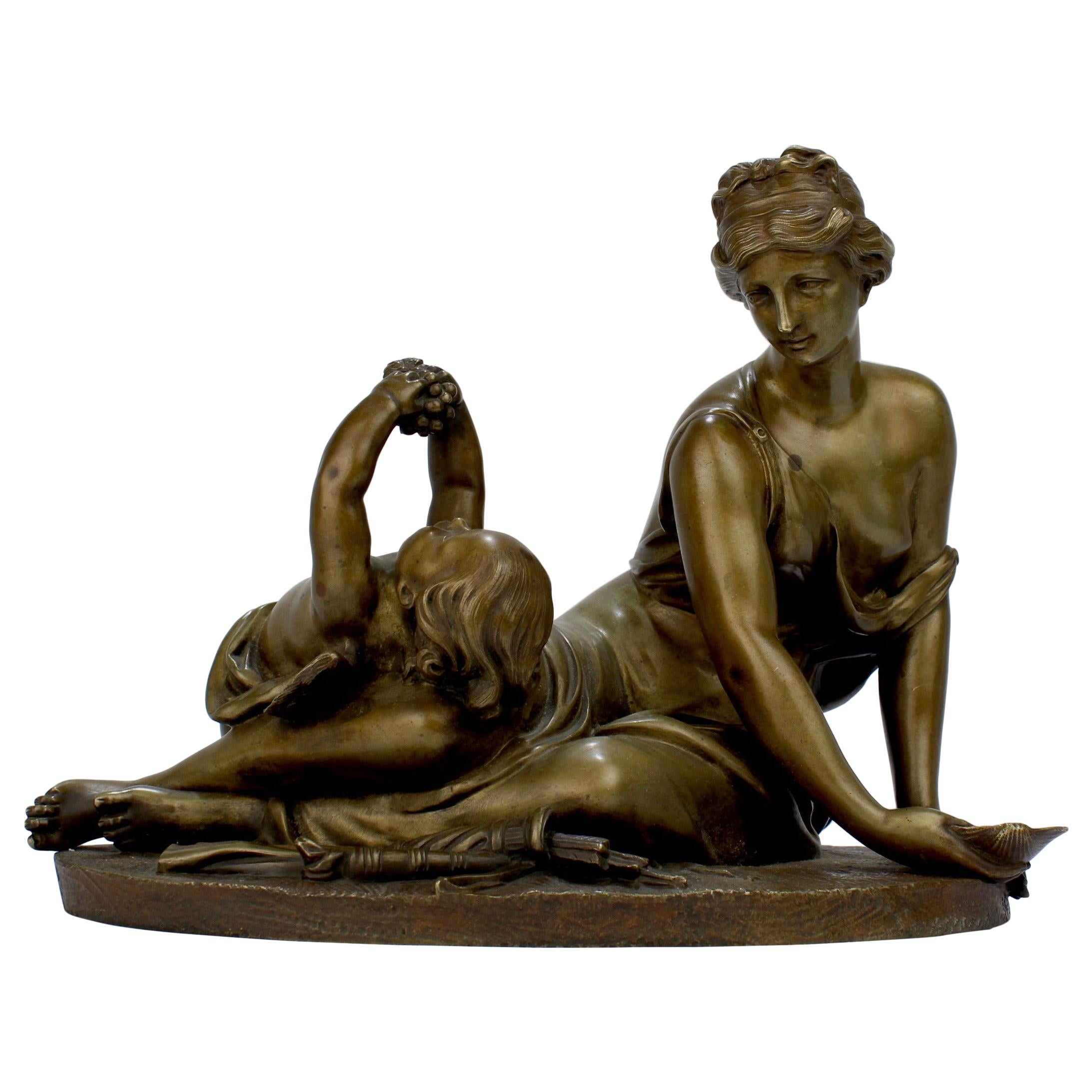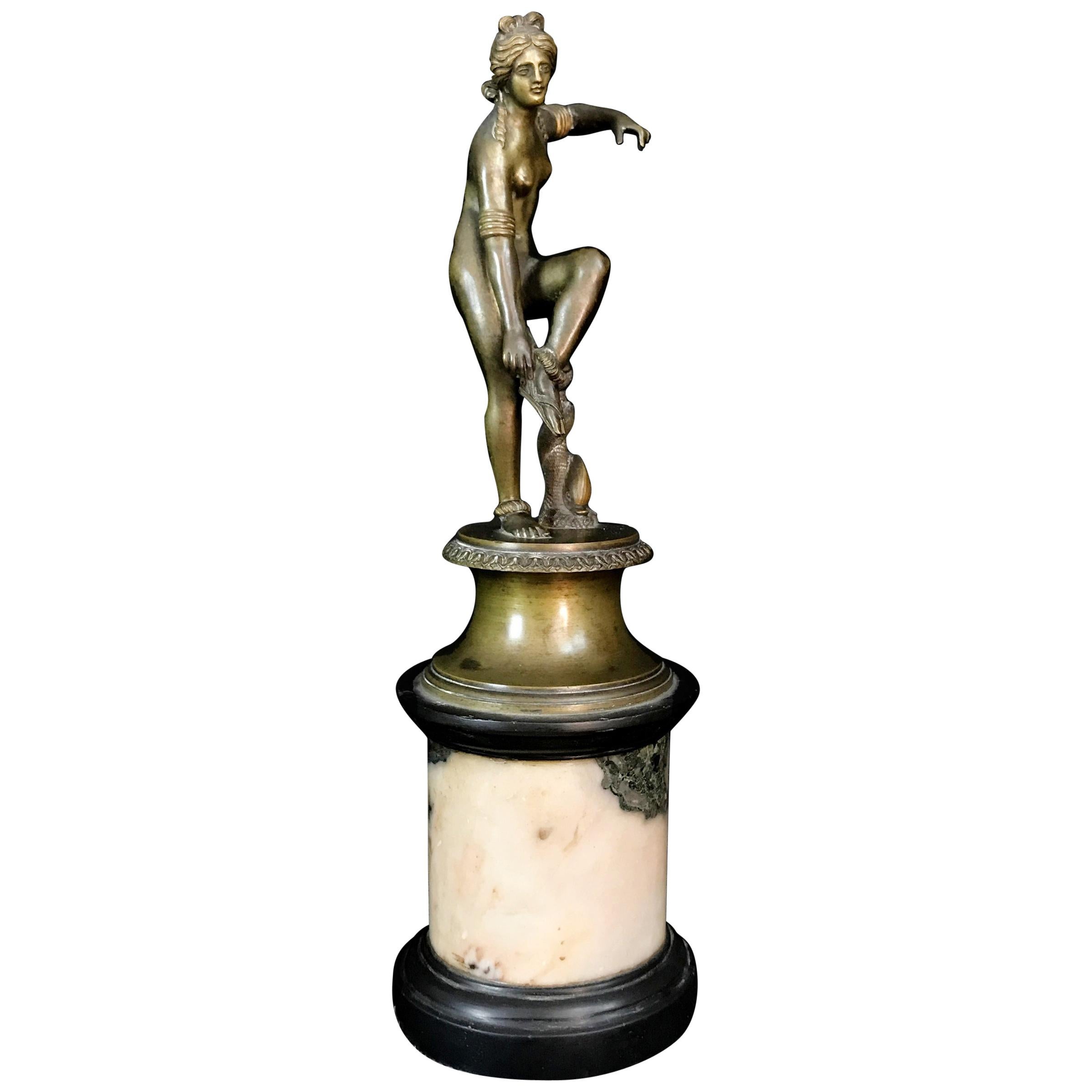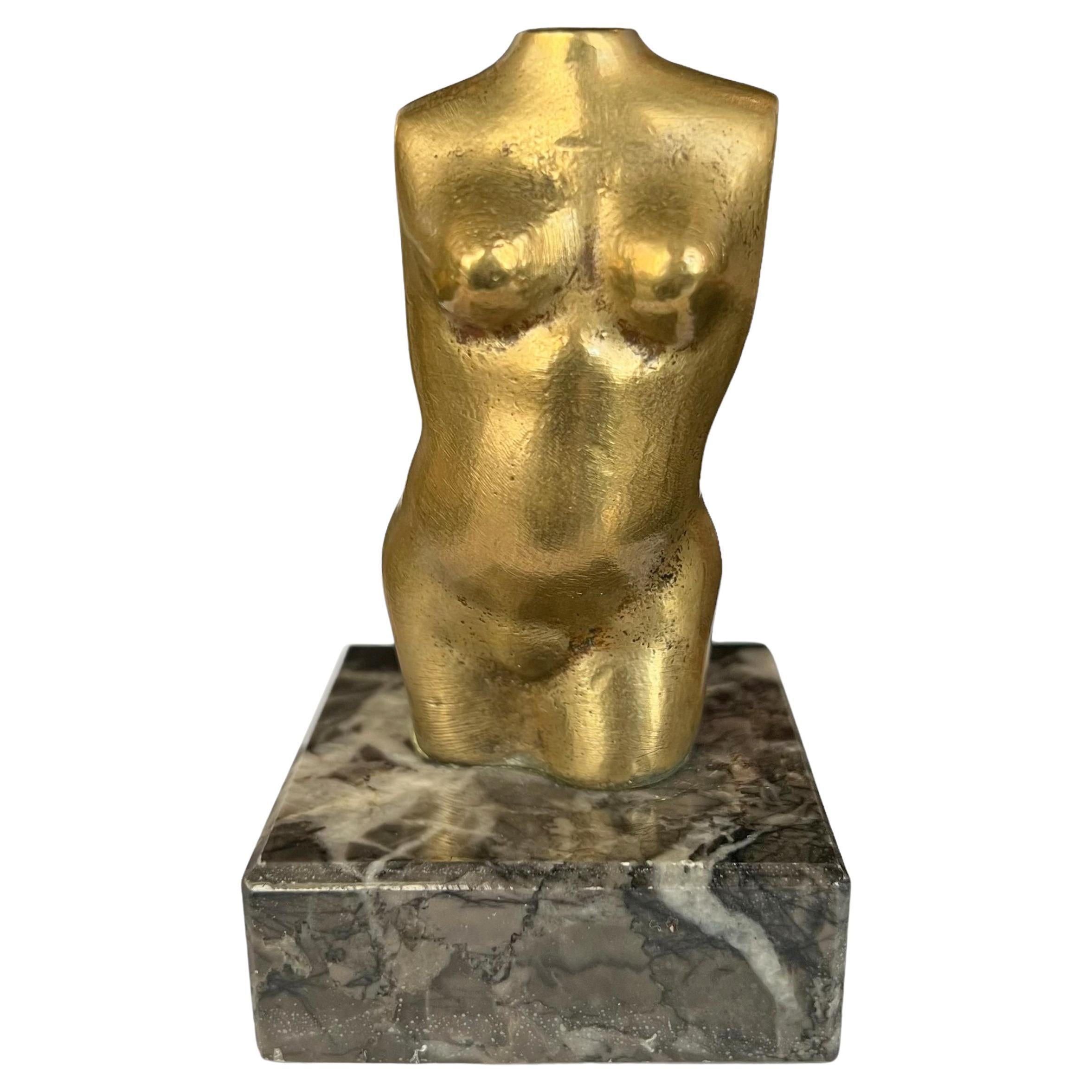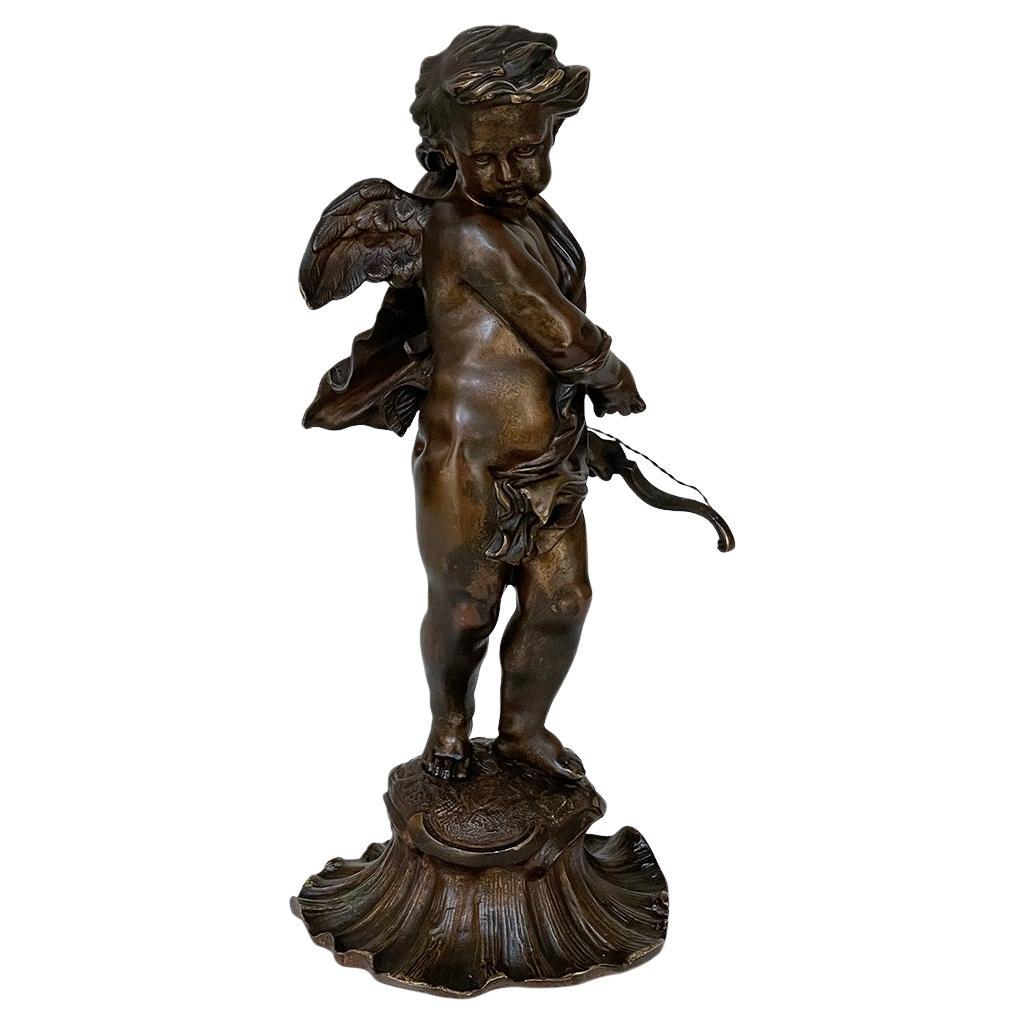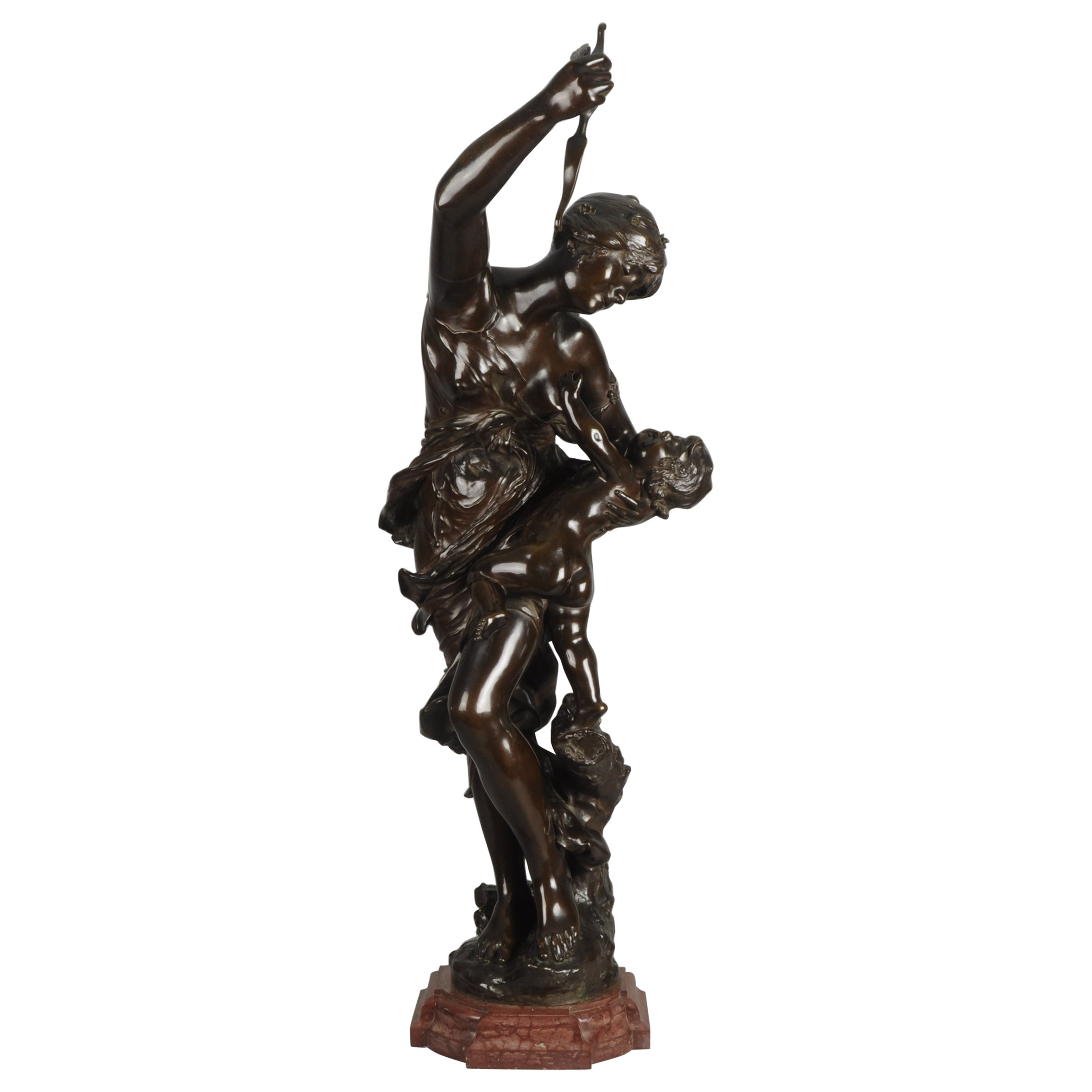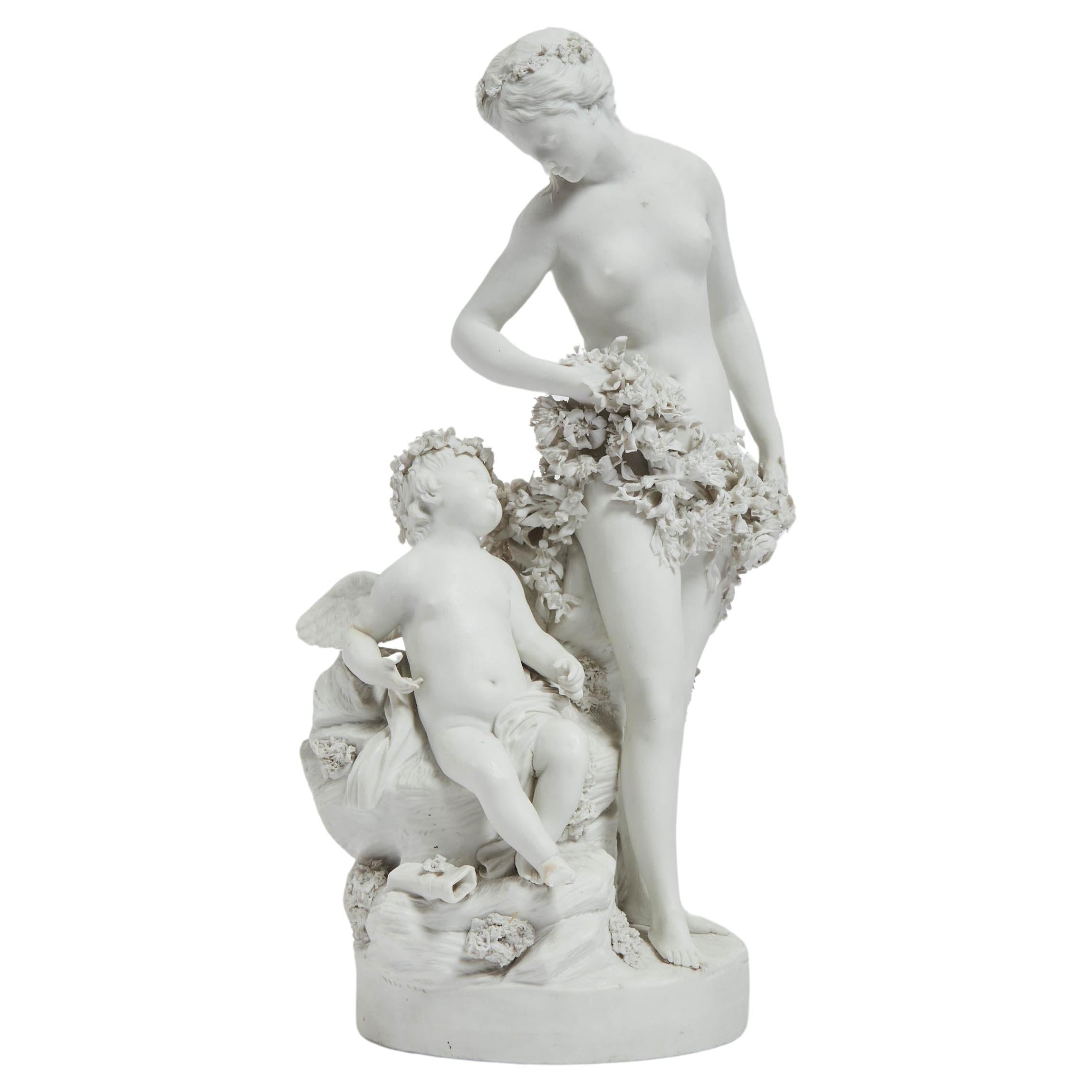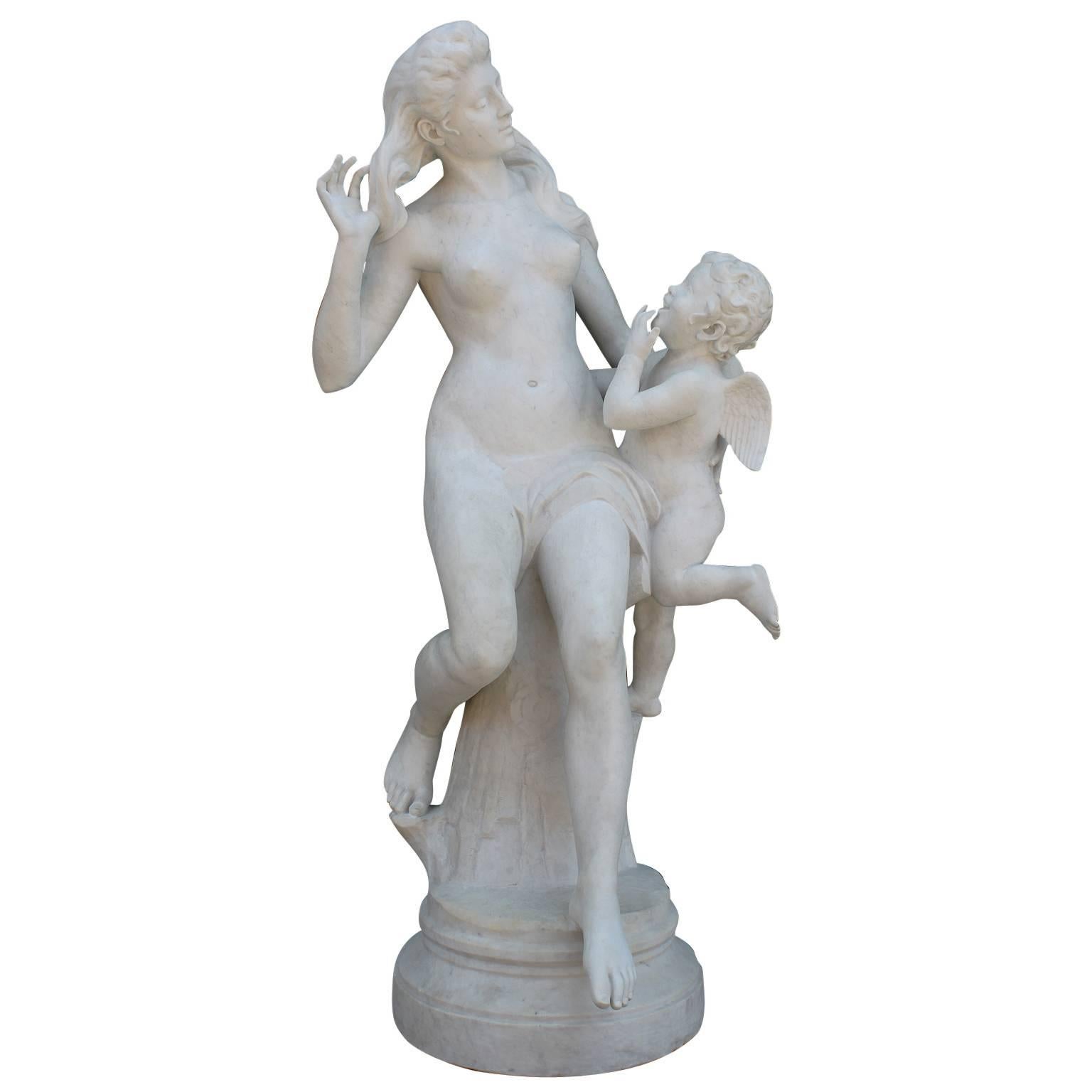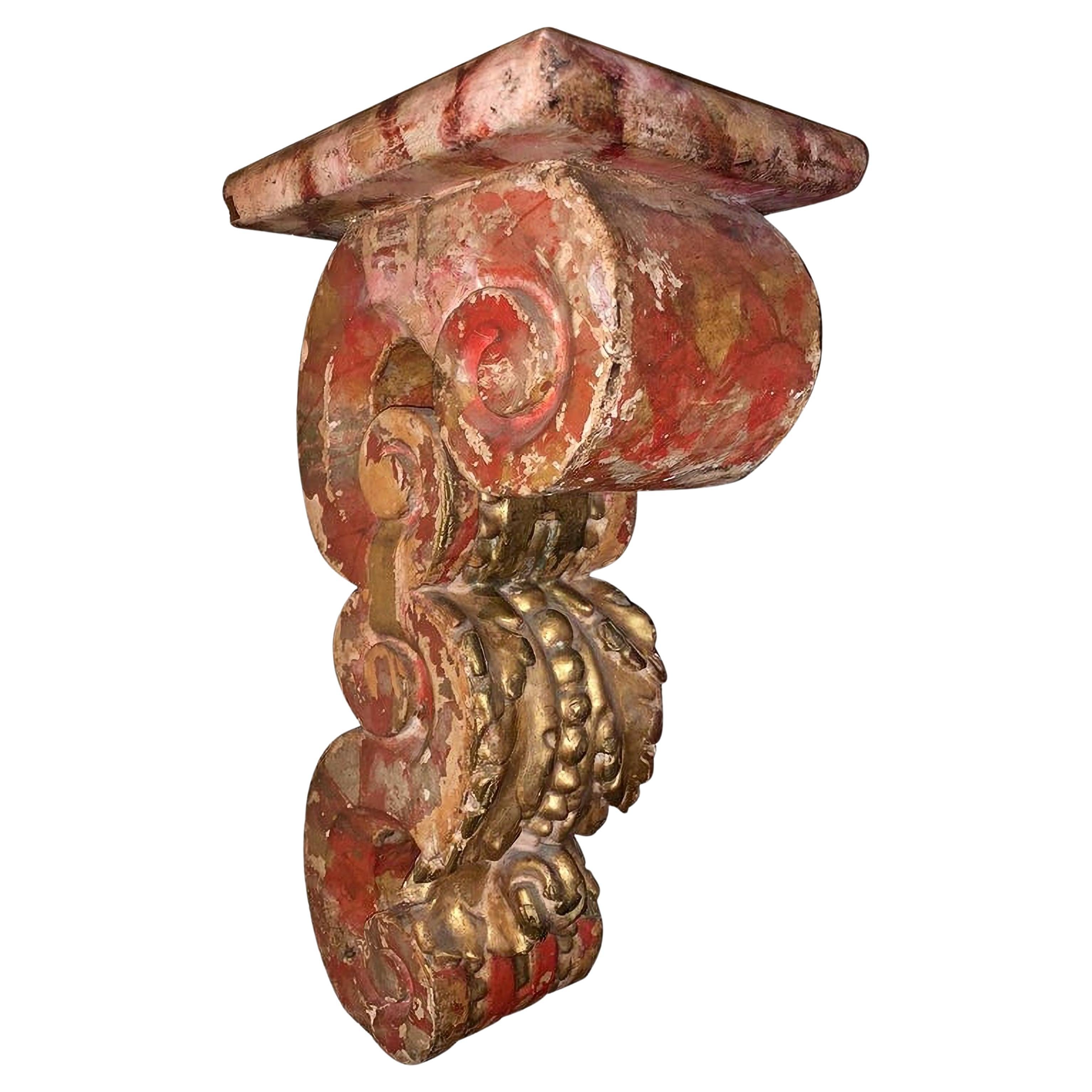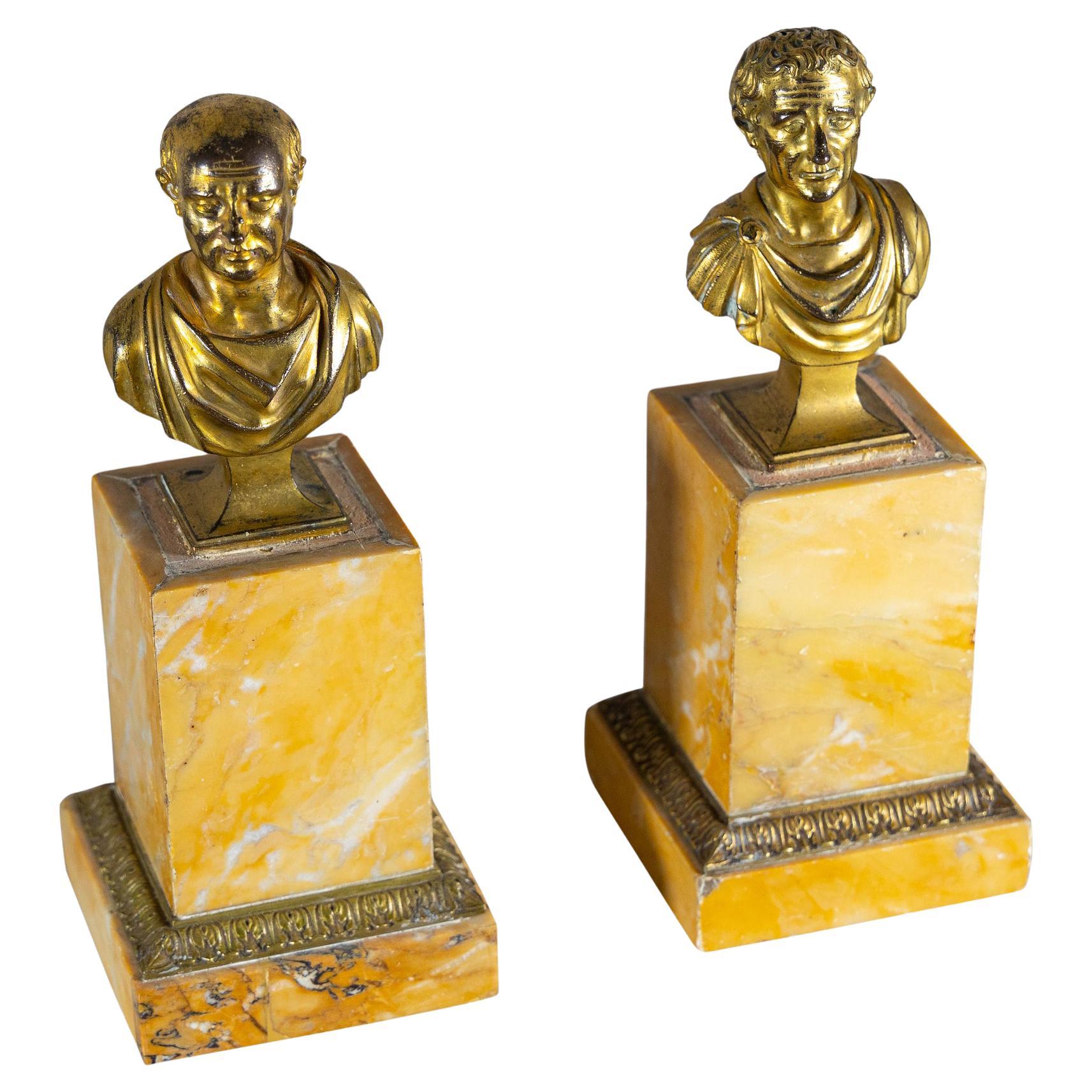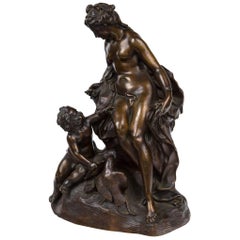
18th Century French Bronze, "Venus Educating Cupid"
View Similar Items
1 of 8
18th Century French Bronze, "Venus Educating Cupid"
About the Item
- Creator:(After) Corneille van Cleve (Sculptor)
- Dimensions:Height: 13 in (33.02 cm)Width: 8 in (20.32 cm)Depth: 5.5 in (13.97 cm)
- Style:Rococo (Of the Period)
- Materials and Techniques:Bronze,Cast
- Place of Origin:
- Period:
- Date of Manufacture:1725
- Condition:Wear consistent with age and use.
- Seller Location:Woodbury, CT
- Reference Number:1stDibs: f86261709298647313fs
You May Also Like
- Antique 19th Century Gilt French Bronze of Venus & Cupid after Carrier-BelleuseBy Albert-Ernest Carrier-BelleuseLocated in Philadelphia, PAA wonderful bronze of a seated Venus and Cupid. Modeled with a recumbent Venus attended by Cupid on an oval plinth in the manner of Albert-Ernest Carrier-Belleuse. With finely...Category
Antique Late 19th Century French Beaux Arts Figurative Sculptures
MaterialsBronze
- 18th Century, Italian Bronze Sculpture with Venus Removing Her SandalLocated in IT18th Century, Italian Bronze Sculpture with Venus Removing Her Sandal This bronze sculpture represents Venus as she takes off her sandal. Made in the neoclassical era in Italy, it consists of the bronze sculpture of the Greek goddess Aphrodite, Venus for the Romans. The naked goddess, getting ready for the bath, makes the very human gesture of loosing a sandal. The left arm is raised, as if to compensate the position while maintaining the balance. Next to her, wrapped around a rocky spur, is a dolphin, an animal iconographically linked to the goddess because of his birth from the foam of the sea. The figure rests on a cylindrical and concave bronze base, with finely chiselled reserves. The bronze element is in turn resting on a africano marble cylinder with black of Belgium marble base. Venus is one of the major Roman goddesses primarily associated with eros and beauty. It is traditionally understood as the equivalent of the Greek goddess Aphrodite, goddess of beauty, physical and passionate love, among the major deities of Olympus. His birth is due to a dramatic event: Uranus, Heaven, is mutilated by his son Cronus, who punishes him for the wrongs inflicted on his mother. The torn limbs of Uranus fall into the sea and fertilize the foam of the waves of the island of Cyprus. From the waves emerges in all its splendor Aphrodite. Since the 4th century, Aphrodite begins to be represented with characters more human and less heroic. Praxiteles with the 'Aphrodite Cnidia,' for the first time in the history of sculpture, depicts her naked, as she prepares to take a ritual bath. From the Pressitele’s model descend the Capitoline Venus (Capitoline Museums of Rome) and the Venus de’ Medici (Uffizi Museum of Florence) accompanied by Eros on the back of a dolphin. This vein also includes a subject frequently attested in the Hellenistic and then Roman Ages, with examples in bronze, marble and terracotta: the Aphrodite who fastens the sandal. The luck that this type of representation had in the following centuries is demonstrated by the vast number of sculptures that represent it. In this bronze work the goddess resumes the position of Oplontis’s Naked Venus: here Venus holds an apple in her left hand, a reminder of her victory in the beauty contest in which she prevailed over Minerva and Juno by judgment of Paris. In our bronze instead, the hand seems to want to shake the apple, which however has not been molded. Perhaps the bronze is inspired by another work, such as the bronzes kept in the archaeological museum of Padua. Another example is the famous 'Venus in bikini" found in Pompeii, so-called because it depicts the goddess in the same pose, but with the breasts and hips covered by bands painted in gold. The dolphin depicted next to it could be inspired instead to the Medici Venus...Category
Antique Late 18th Century Italian Neoclassical Figurative Sculptures
MaterialsMarble, Belgian Black Marble, Bronze
- 20th Century French Bronze Venus SculptureLocated in Chicago, ILThis 20th-century French gilt bronze "Venus" sculpture is a harmonious fusion of ancient inspiration and modernist aesthetics. The abstracted female torso, resplendent in gilded bron...Category
20th Century French Modern Figurative Sculptures
MaterialsBronze
- 19th Century French Bronze Statue of CupidLocated in Dallas, TX19th Century French bronze statue of cupid captures the mischievous cherub just after letting his arrow fly. The classic pose inspired by ancient Greek and Roman statuary...Category
Antique 1890s French Neoclassical Figurative Sculptures
MaterialsBronze
$1,984 Sale Price20% Off - 19th Century Art Nouveau Bronze Entitled "Venus & Cupid" by Jean Sul-AbadieBy Jean AbadieLocated in London, GBA very fine bronze study of Venus taking an arrow from Cupid her son, who at times would shoot his arrows without meaning or reason into the hearts of men, igniting their desire. Exhibiting excellent rich brown patina and good detail, signed Sul Abadie and stamped. Additional information Height: 93 cm Condition: excellent condition Circa: 1885 Materials: bronze & marble SKU: 4979 ABOUT Jean Sul-Abadie Jean Sul-Abadie (Born 1850 ~ Died 15th April 1890) was a French artist, a pupil of Jouffroy and Falguière. Specialising in bronze sculpting in the Art Nouveau style. He made his Salon debut in 1872. Cupid & Venus Different tales exist about the origin of Venus and Cupid. Some say that Venus, the goddess of love and beauty, had a love affair with Mars, the god of war. Out of this relationship, Cupid was born. In the following painting you see Venus with Mars, who is being disarmed by Cupid. Cupid has attributes from both of his parents. Like his mother he is considered to be the god of love, or more precisely, the god of falling in love. He is portrayed as an innocent little child with bow and arrows. He shoots arrows to the heart, and awakening a love that you’re powerless to resist. In classical mythology, Cupid (Latin Cupido, meaning “desire”) is the god of desire, erotic love, attraction and affection. He is often portrayed as the son of the love goddess Venus and the war god Mars, and is known in Latin also as Amor (“Love”). His Greek counterpart is Eros. Although Eros is in Classical Greek art as a slender winged youth, during the Hellenistic period, he was increasingly portrayed as a chubby boy. During this time, his iconography acquired the bow and arrow that represent his source of power: a person, or even a deity, who is shot by Cupid’s arrow is filled with uncontrollable desire. In myths, Cupid is a minor character who serves mostly to set the plot in motion. He is a main character only in the tale of Cupid and Psyche, when wounded by his own weapons he experiences the ordeal of love. Although other extended stories are not told about him, his tradition is rich in poetic themes and visual scenarios, such as “Love conquers all” and the retaliatory punishment or torture of Cupid. In art, Cupid often appears in multiples as the Amores, or amoriniin the later terminology of art history, the equivalent of the Greek erotes. Cupids are a frequent motif of both Roman art and later Western art of the classical tradition. In the 15th century, the iconography of Cupid starts to become indistinguishable from the putto. Cupid continued to be a popular figure in the Middle Ages, when under Christian influence he often had a dual nature as Heavenly and Earthly love. In the Renaissance, a renewed interest in classical philosophy endowed him with complex allegorical meanings. In contemporary popular culture, Cupid is shown drawing his bow to inspire romantic love, often as an icon of Valentine’s Day. Venus is the Roman goddess whose functions encompassed love, beauty, sex, fertility, prosperity, victory, and desire. In Roman mythology, she was the mother of the Roman people through her son, Aeneas, who survived the fall of Troy...Category
Antique Late 19th Century French Art Nouveau Figurative Sculptures
MaterialsBreccia Marble, Bronze
- Venus Pudica (Medici-type) - 18th century, ItalyLocated in Bruxelles, BEMonumental sculpture representing the Venus Pudica (Medici-type) 18th Century Italian (Rome) White marble Based on a model from Antiquity, the Medici Venus, currently in the Uffizi ...Category
Antique Early 18th Century Italian Grand Tour Figurative Sculptures
MaterialsMarble
